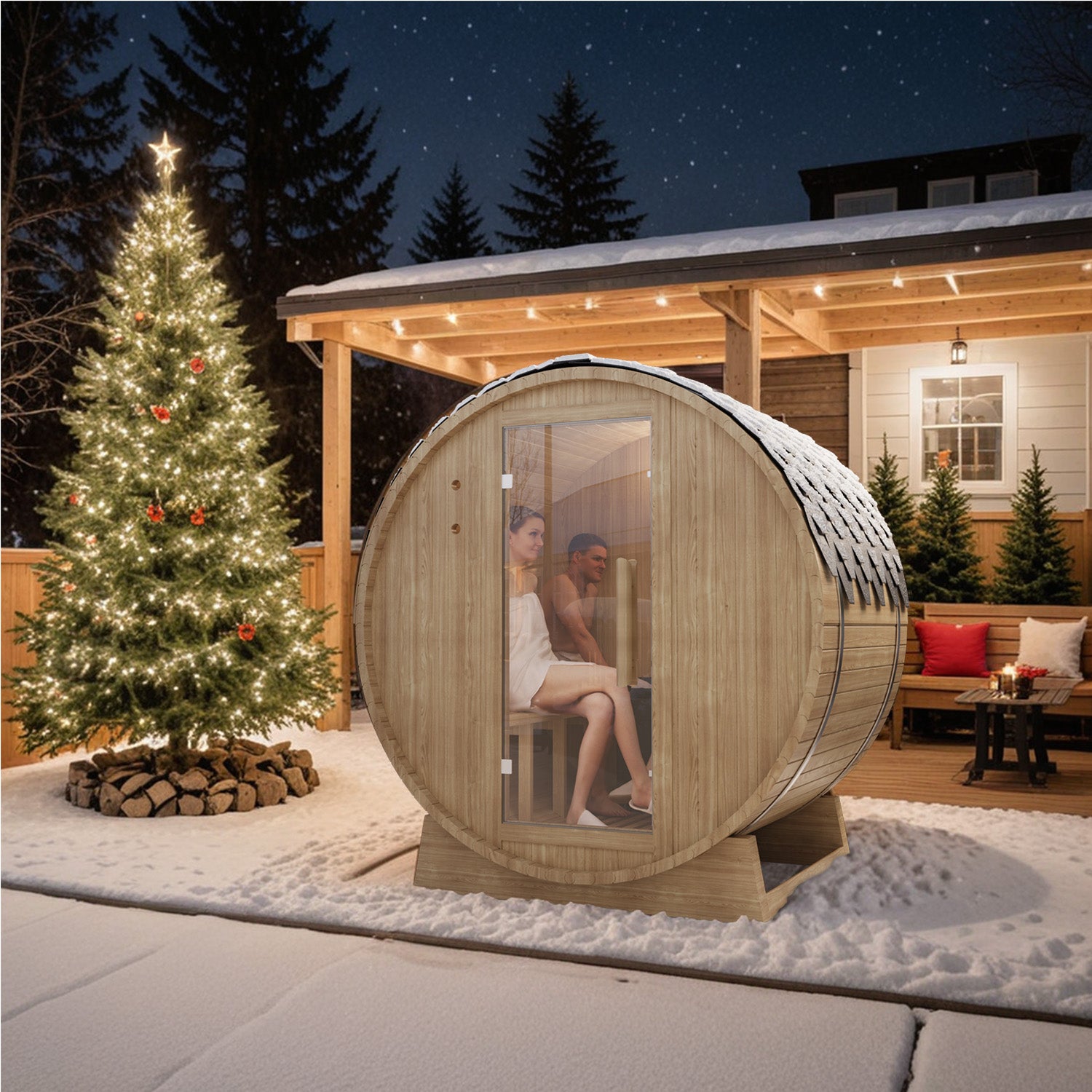Saunas are a popular way to relax and improve overall wellness. But with options like dry saunas, wet saunas, and infrared saunas, it’s essential to know the differences before you choose.
Table of Contents:[hide]
What is a Dry Sauna?
A dry sauna is a type of sauna that uses dry heat to create a hot, low-humidity environment. The air inside typically has humidity levels under 20%, making the experience feel intense and deeply warming.
Dry saunas are often made from wood, such as cedar or hemlock, and are heated with an electric or wood-burning stove. Unlike wet saunas or steam rooms, dry saunas do not use steam or added moisture.
In short: A dry sauna is a space filled with hot, dry air that raises your body temperature and promotes sweating without the presence of steam.
How Does a Dry Sauna Work?
Dry saunas work by heating the air inside the room. The high temperature, usually between 160°F and 195°F (70°C to 90°C), gradually warms your body.
As your core body temperature rises, your body responds by sweating to cool down. This process helps:
- Increase circulation
- Promote detoxification
- Relax muscles and joints
- Relieve stress and tension
Some dry saunas feature heated stones. You can pour a small amount of water on them for a brief burst of steam, but this doesn’t create a true wet sauna environment—it simply adds a temporary rise in humidity.
What Are the Benefits of a Dry Sauna?
Dry saunas offer a wide range of physical and mental health benefits.
1. Muscle Relaxation and Recovery
The heat helps relieve muscle soreness, making dry saunas ideal for athletes or anyone recovering from physical activity.
2. Improved Circulation
High temperatures encourage blood vessels to expand, boosting circulation and delivering oxygen-rich blood throughout the body.
3. Stress Relief
The calming, quiet environment promotes mental relaxation and helps reduce stress levels.
4. Detoxification Through Sweating
Sweating helps your body flush out toxins, including heavy metals and impurities.
5. Skin Health
Regular sauna use can cleanse pores and improve skin tone by increasing blood flow to the surface.
Note: The benefits of dry saunas are similar to those of wet saunas, but some people find the lack of humidity more comfortable.
How Do Dry Saunas Compare to Infrared Saunas?
Dry saunas and infrared saunas both provide heat therapy, but they work differently and offer unique experiences.
|
Feature |
Dry Sauna |
Infrared Sauna |
|
Heat Source |
Heats the air with a stove or heater |
Directly heats your body with infrared light |
|
Temperature Range |
160°F – 195°F (70°C – 90°C) |
110°F – 140°F (43°C – 60°C) |
|
Humidity |
Very low (under 20%) |
Very low |
|
Heat Penetration |
Surface of the skin |
Deeper into muscles and tissues |
|
Session Comfort |
Intense, traditional sauna feel |
Gentler, more tolerable for beginners |
|
Best For |
Traditional sauna enthusiasts |
People sensitive to high heat |
Takeaway: If you prefer a classic, high-heat sauna experience, choose a dry sauna. If you want lower temperatures and deep tissue warmth, an infrared sauna may be better.
How Long is it Safe to Be in a Sauna?
The ideal time in a sauna depends on experience level and personal health.
-
Beginners: Start with 5–10 minutes per session.
-
Regular users: Up to 15–20 minutes is generally safe.
- Maximum: Most experts recommend no more than 30 minutes at a time.
Always listen to your body—leave immediately if you feel dizzy, lightheaded, or overheated.
Tip: Drink plenty of water before and after to stay hydrated.
Most Frequently Asked Questions
What is better: a dry or steam sauna?
It depends on your preference.
-
Dry sauna: Offers intense, dry heat and deep muscle relaxation.
-
Steam sauna: Uses moisture to create a humid environment, which is soothing for skin and respiratory health.
When to use a dry sauna?
Use a dry sauna after a workout for muscle recovery or at the end of the day to relieve stress and promote relaxation.
How to use wet and dry saunas?
-
Dry sauna: Sit or lie on the bench and allow your body to sweat naturally.
-
Wet sauna: Pour water over heated stones to generate steam and increase humidity.
Are saunas wet or dry?
Saunas can be either wet or dry, depending on whether water is used to create steam. Traditional Finnish saunas can switch between the two.
Dry or wet sauna for weight loss?
Both can support weight loss indirectly by increasing sweating and circulation. However, they are most effective when combined with exercise and a balanced diet.
Is a dry sauna good after a workout?
Yes! A dry sauna can help reduce muscle soreness, relax tense muscles, and speed up post-workout recovery.
Conclusion
Dry saunas offer a traditional, powerful heat experience with numerous health benefits, from stress relief to muscle recovery. While wet saunas and infrared saunas provide similar advantages, the choice comes down to personal comfort and wellness goals.
Whether you prefer the dry heat of a classic sauna or the moist warmth of a steam sauna, regular sauna sessions can play an important role in your overall health and well-being.
Diana Mason
Hi there! I’m Diana Mason, the chief editor of Patiowell brand. With over 15 years of diving deep into the world of outdoor furniture, I’ve developed a keen eye for what makes outdoor spaces truly special. I love sharing tips and inspiration to help you create your perfect backyard retreat. Our blog is a reflection of my passion and expertise, featuring only the best pieces that I personally vouch for. Thanks for stopping by—I can't wait to help you transform your outdoor living space!







Leave a comment
All comments are moderated before being published.
This site is protected by hCaptcha and the hCaptcha Privacy Policy and Terms of Service apply.